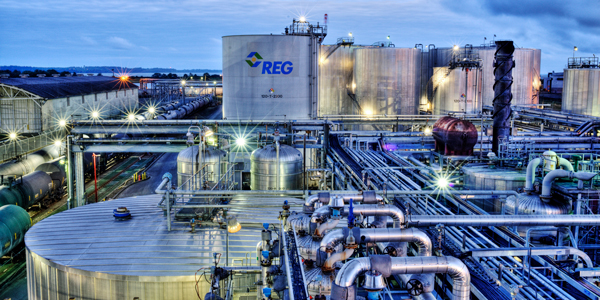 Loading...
Loading...
Science 10
Biofuels:
Biofuels are fuels sourced from biomass. There are multiple types of biofuels with the two main types being ethanol, and biodiesel. Ethanol is used to increase the octane of petrol which makes it burn cleaner, in some cases even being used as a fuel in itself. Biodiesel seems to be the most promising fuel for transportation as its a “drop-in” fuel which means it’s compatible with current diesel engines, and fuel distribution infrastructure.

Renewable Energy Group Biodiesel Plant
What makes biofuels appealing is that they’re derived from renewable sources and have a lesser environmental impact. Biofuels may also further economic development in rural areas and increase the income of farmers growing biomass for biofuels. Although biofuels are derived from renewable sources, 74% of biodiesel is produced using vegetable oil which raises concerns of diverting fertile land and food-crops to produce biofuels. Newer generations of biofuel will use non-food crops allowing for lower carbon ethanol biofuels and use the entirety of crops instead of only using the sugars, starches, and oils. Although increasing the ethanol in petrol creates a cleaner-burning fuel most cars today can’t utilize fuel blends higher than 10-15% ethanol.

POET’s cellulosic ethanol plant at Emmetsburg, Iowa
As biofuel continues to advance and better utilize biomass, “drop-in” fuels can be used to create low carbon fuels that will help mitigate environmental problems related to the methods of obtaining fossil fuels and the use of fossil fuels. Even if all vehicles sold from today onwards were electric it would still take 25 years for most or even all the vehicles currently using fossil fuels. This highlights the problem that fossil fuels will still be needed as most people may not end up owning an electric vehicle until new battery technologies release creating a more viable alternative. Fuels like biodiesel will provide direct replacements to the non-renewable fuels many vehicles use today and will help mitigate potential local environmental issues and climate change.
Works Cited
 Loading...
Loading...
 Loading...
Loading...
Paper Planes Weight Distribution Lab
The purpose of this experiment was to discover the optimal placement of paperclips on a paper plane for it to travel farthest. The paper plane was tested with two paperclips in the front, two in the back, and without. Through experimentation, I found that the plane without weight travelled 3.9m, with two paperclips at the tip of the plane it travelled 3.7m and finally with the two paperclips at the back it travelled the furthest with a distance of 4.1m. I learned that some paper planes can benefit from the additional weight on the rear of the plane but in the future, I would want to test more designs to see how the weight distribution affects them in addition to finding a more reliable and consistent method of throwing the planes.



